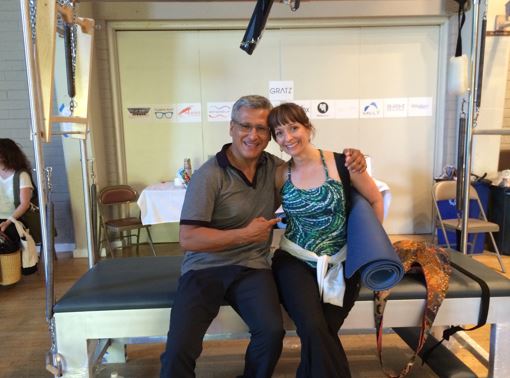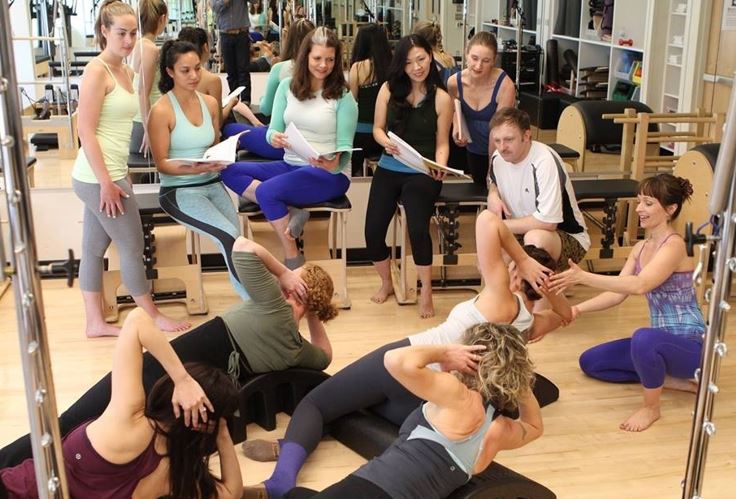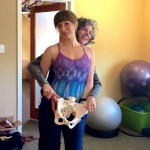Pictured Above: Sarah Artha Negara & Stella Lorvan
Transformational Language – Part 1
by Sarah K. Artha Negara, MFA, PMA®-CPT
Each Pilates class is a physical and emotional journey for our students
I have five transformational secrets that I share with all of my teacher trainers. They help them to be more effective teachers, land jobs, and build successful careers. Using these five concepts has proven time and time again to promote a positive, inclusive, and transformative experience for students that keep them coming back for more….
In Part 1 (this week), I will make some introductory remarks and then provide in-depth discussion of the first two of the five secrets. In Part 2 (next week), we’ll cover the remaining three secrets and some concluding remarks.
Introductory Thoughts
As instructors, we each have our own unique personality, sense of humor, corporeal knowledge, training background, flair, and approach to teaching the Pilates method. Variety is the spice of life – and I love my hot sauce! Personally, I enjoy a good dry and cheeky sense of humor (Alan Herdman, Moses Urbano, Dixie Mills), Anatomy geeks (Karen Clippinger, Nora St.John, Marie-Jose Blom), the creative & zany (Elizabeth Larkam & Faye Stevenson), alignment narcs (Alycea Ungaro, Stella Lorvan, Karen Christiansen), and no-nonsense outspoken teachers (Siri Galliano). For sure, many of the above teachers fall into more than one category, but what do all of these people have in common? In addition to vast amounts of knowledge, expertise, and skill … at one time or another, they have all made my heart smile.

Pictured Above: Moses Urbano & Sarah Artha Negara
Students often come to Pilates classes for more than just exercise: they come to have an experience; they come for community and encouragement; and they come to embark upon, or continue on, a journey of personal growth and holistic health. For me, Pilates is not an ooey-gooey pull-on-my-heartstrings type of mind-body exercise like Yoga; but I do think that our job is to support our clients’ paths to holistic health. I think it’s important that, as instructors, we realize we are also facilitators. We cannot make our students feel a certain way, but we can facilitate a positive and supportive environment that may provide a more conducive atmosphere for learning and transformative experiences. These five secrets can be implemented by any teacher, from classical to contemporary, without diminishing one’s personal blend or roaming outside one’s scope of practice.

Pictured Above: College of San Mateo Teacher Training Students
Secret 1: Inclusive Language
“Inclusive language is language that is free from words, phrases, or tones that reflect prejudiced, stereotyped, or discriminatory views of particular people or groups. It is also language that doesn’t deliberately or inadvertently exclude people from being seen as part of a group. Inclusive language is sometimes called non-discriminatory language.” ~Guidelines for Inclusive Language
When we are teaching group classes, we want all of our students to feel important and included. Using language like we’re, let’s, our, and the instead of you and your can help facilitate this. Words like you and your can have a more defensive response for some, if not most, people. This response is often unconscious, for we usually know our instructors have the best of intentions, but on occasion, some students feel like they are being bullied or picked on. This can be especially true for new students in class who might need some time to acclimate to the world of Pilates and our nitpicky cueing that they will eventually be grateful for (we hope). Reminding our students to let go of judgment and comparing themselves to others can also help facilitate an inclusive learning environment.
It is very important for students to get personalized feedback, but we can let students know we’re talking to them by using non-verbal communication like eye contact, gesturing to them subtly, or giving a manual cue as we continue to still speak to the crowd. Once I know students well and have gauged their comfort levels, I then use their names on occasion to help them focus. Most people love to hear their names said out loud (read Dale Carnegie’s How to Win Friends and Influence People), but may wince if they feel they are being scolded. The best time to use someone’s name is when giving them a compliment. Here are a couple examples:
“Let’s relax our necks and drop the shoulders down away from our ears, shall we?”
“Great job maintaining your pelvic stability Kelly!”
When teaching one-on-one, it’s a bit odd to say we’re, let’s and our, but “the” tends to work well most of the time when requesting an action from a specific body part. For example, “Relax the hips and engage those gluteals.” At times, it’s impossible and odd not to use the words you and your when speaking directly to a specific client, so remember that inclusive language is just a tool. Sometimes the tool fits the project, and sometimes it does not. However, if one of these transformational tools doesn’t fit a particular situation, consider which of the other tools may help you to get the job done more effectively.
Secret 2: Action Verbs
Action verbs help bring us into the present moment. As we teach, our words should match what we want our students to be doing. For example, in a hamstring stretch, we might say, “Let’s enjoy the lengthening of our hamstrings,” or while bridging, “Roll up through the spine while reaching the knees toward the toes.” Notice that many action verbs end with -ing, so if you are at a loss for words while teaching, try to think up some fitting -ing words to enliven your students’ experiences.
I also find a lot of instructors tend to say, “Now we’re going to …,” rather than speaking in the present tense. When exercises are taught in the future tense, students are drawn out of the moment and spend too much time waiting for directions instead of moving during their Pilates session. So, I especially encourage new instructors to get out of this habit as fast as possible. Replace future tense sentences like, “Now we’re going to…,” with present tense words and phrases like as, now, let’s…, or insert an action verb. For example, “As we exhale, engage the abdominals, tuck the tailbone, and press into the heels to lift the hips up toward the ceiling. Now take a breath here at the top while enjoying the openness in the hips.” In a nutshell, we should be using action verbs as we teach to match the intentions of what we want our students to being doing and achieving!
Please join me next week for Part 2 where we will discuss Positive Words, Progressive Language, and Mindfulness.
 Sarah K. Artha Negara, MFA, PMA®-CPT, ACE-CPT, NASM-PES is a dance and kinesiology educator, founder and director of College of San Mateo’s Pilates Instructor Certificate Program, a Balanced Body master instructor, and owner of Bali Body Pilates. Sarah has an MFA from Mills College and BFA from CSU Long Beach. She studied extensively with Karen Clippinger at CSULB and is a proud graduate of the first teacher training class held at Turning Point Studios (lead by Nora St. John and Naomi Leiserson). To learn more about upcoming trainings, classes, CEC workshops, and retreats visit www.balibodypilates.com
Sarah K. Artha Negara, MFA, PMA®-CPT, ACE-CPT, NASM-PES is a dance and kinesiology educator, founder and director of College of San Mateo’s Pilates Instructor Certificate Program, a Balanced Body master instructor, and owner of Bali Body Pilates. Sarah has an MFA from Mills College and BFA from CSU Long Beach. She studied extensively with Karen Clippinger at CSULB and is a proud graduate of the first teacher training class held at Turning Point Studios (lead by Nora St. John and Naomi Leiserson). To learn more about upcoming trainings, classes, CEC workshops, and retreats visit www.balibodypilates.com

